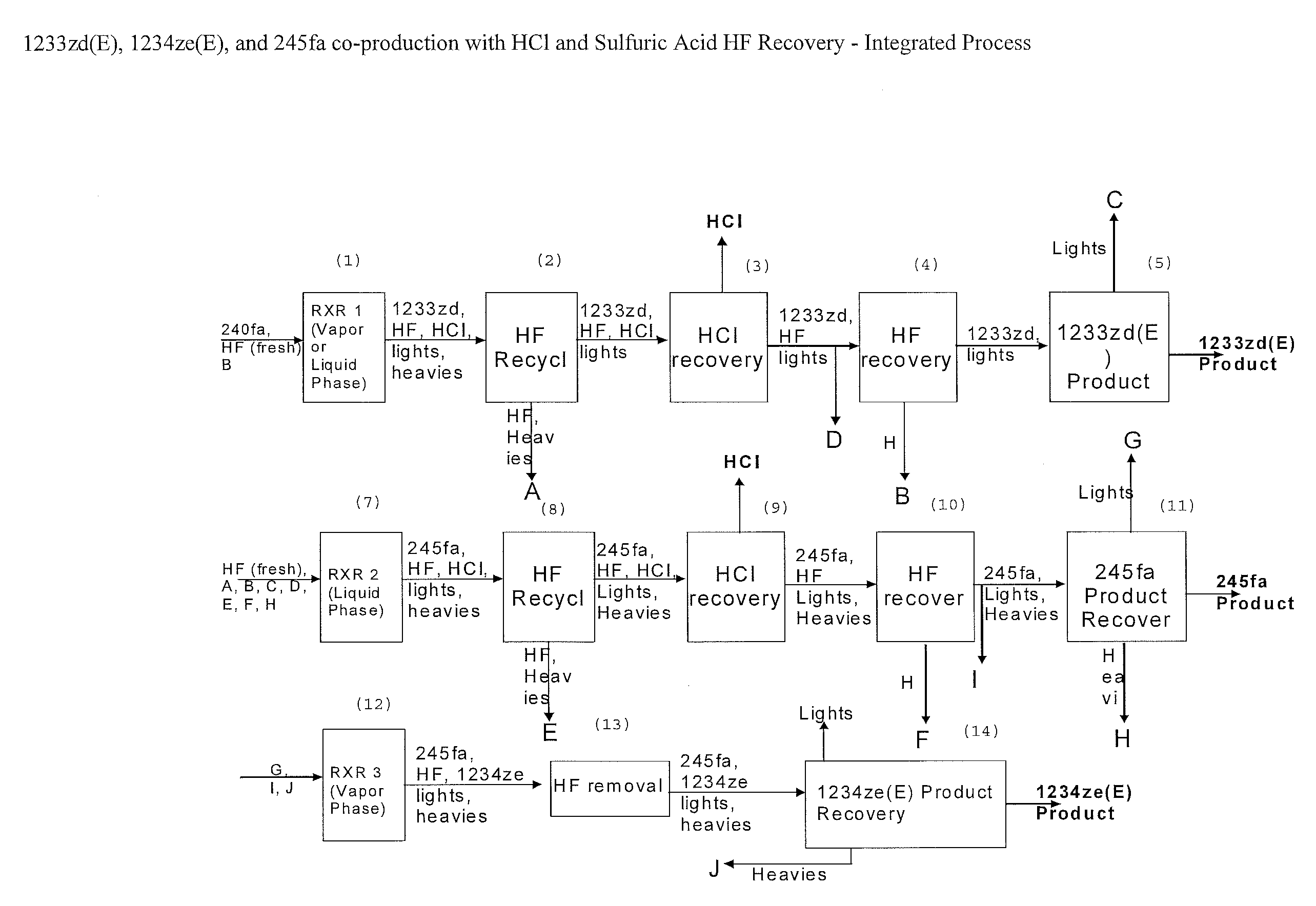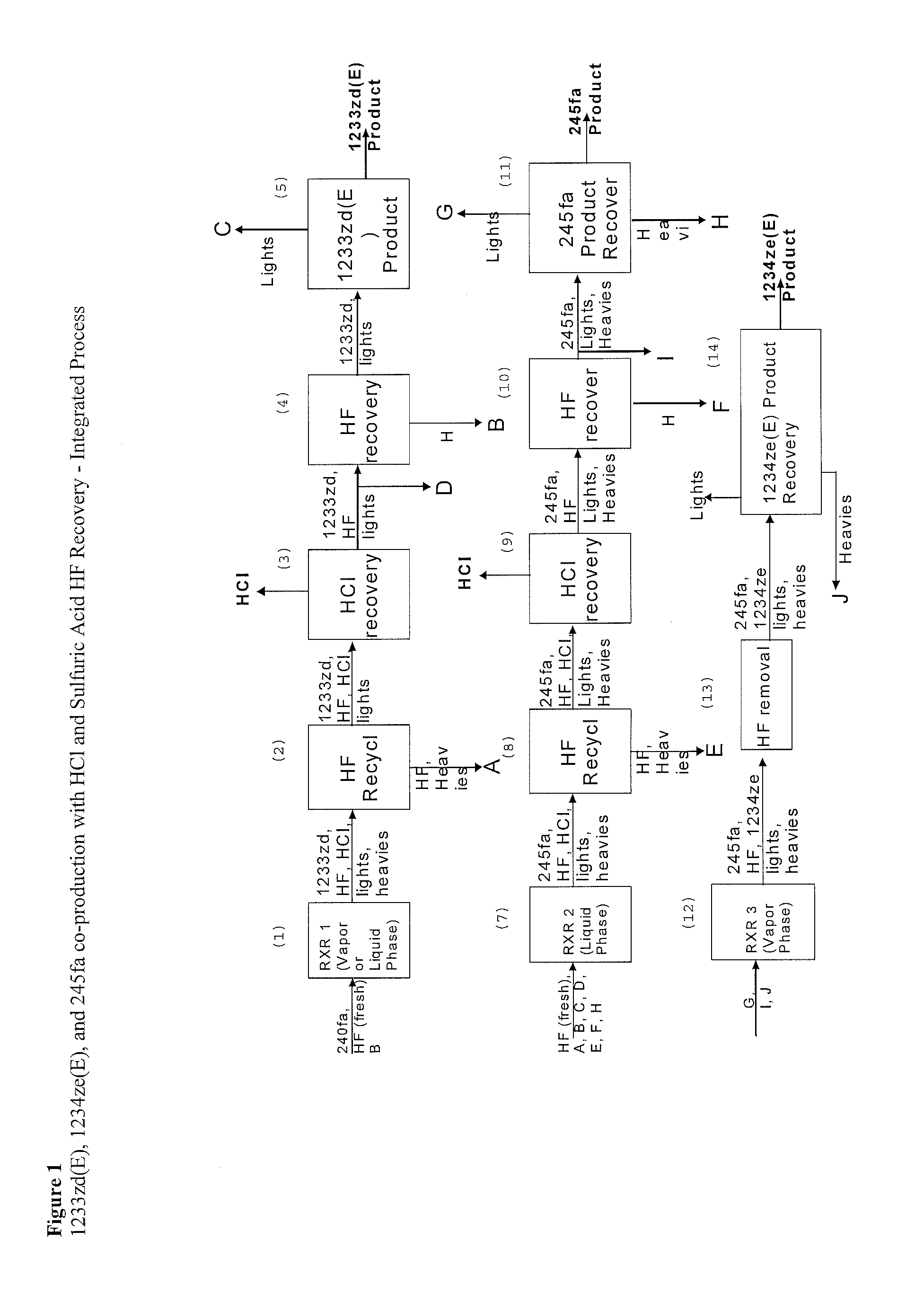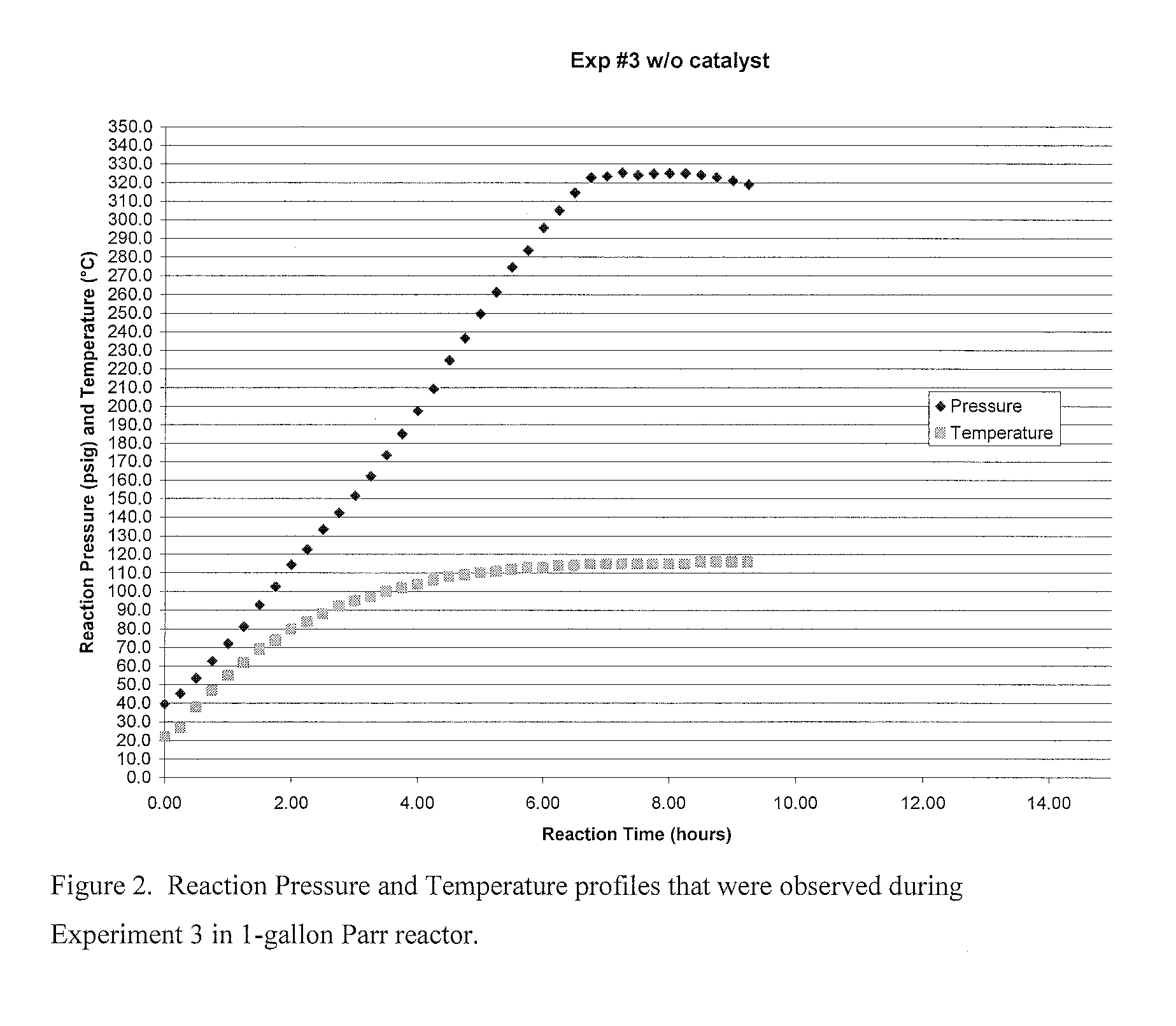Integrated Process to Coproduce Trans-1-Chloro-3,3,3-Trifluoropropene, Trans-1,3,3,3-Tetrafluoropropene, and 1,1,1,3,3-Pentafluoropropane
a technology of trifluoropropene and trans-pentafluoropropane, which is applied in the field of integrated process to coproduce trans-1,3,3,3-tetrafluoropropene, trans-1,3,3,3-tetrafluoropropene, and 1,1,1,3,3-pentafluoropropane, to achieve the effects of high product yield loss, high selectivity and great flexibility in production
- Summary
- Abstract
- Description
- Claims
- Application Information
AI Technical Summary
Benefits of technology
Problems solved by technology
Method used
Image
Examples
example 1
[0062]As part of the development of a liquid phase process for making 1233zd(E) an experiment was run using no catalyst. The experiment used a 1-gallon Parr reactor and was run in a batch mode. The experiment was called Exp #3. See also, FIG. 2.
[0063]For the experiment 282.9 grams of HF and 246.2 grams of HCC-240fa (1,1,1,3,3-pentachloropropane) (12.4 to 1 mole ratio HF:240fa) were charged to the reactor at room temperature. The mixer was then turned on ensuring the reactor contents were well mixed. Then the reactor was heated to the desired temperature. Upon heating the pressure began to rise as HCl by product was produced as a result of a fluorination reaction. The reactor was heated to about 110° C. over several hours and held. The pressure was controlled in the range of 250 psig to 325 psig by venting off the HCl generated in the reaction to a dry-ice chilled dry ice trap (DIT). At the completion of the reaction after about 9.5 hrs., that was determined by lack of HCl generation...
example 2
Dehydrofluorination of 245fa
[0068]The reaction was conducted in a two inch inner diameter Monel packed-bed reactor charged with 760 mL of fluorinated Cr2O3 catalyst. The crude product stream exiting the reactor was fed to KOH scrubber and then to a single distillation column operating in a continuous mode. The 1234ze(E) product together with light impurities was collected as a distillate from the top of the distillation column. The stream consisting mainly of unreacted 245fa and 1234ze(Z) by-product was recycled back to the reactor from the bottom of the reboiler. The reaction was conducted at catalyst bed temperature of 240° C. to 290° C. (coldest at the reactor inlet), at a reactor pressure of 5.2 psig, a constant 245fa feed rate of 1.2 lb / h, a recycle feed rate varied between 0.8 to 0.98 lb / h to maintain a constant liquid level in reboiler, and a constant overhead take-off rate of 1.02 lb / h (which is equivalent to a trans-1234ze productivity of 38 lb / ft3 / hr).
[0069]During continuo...
example 3
[0070]This example illustrates continuous distillation of the crude mixture consisting essentially of HCFO-1234ze(E), HCFO-1234ze(Z), and HFC-245fa that was produced in Example 2.
[0071]The distillation column consisted of a ten gallon reboiler, two inch inner diameter by ten foot column packed with propack distillation packing and a shell and tube condenser. The column had about 30 theoretical plates. The distillation column was equipped with reboiler level indicator; temperature, pressure, and differential pressure transmitters. The distillation was run at pressure of about 50 psig and differential pressure of about 17 inches of H2O in the continuous mode.
[0072]The feed consisting essentially of HCFO-1234ze(E), HCFO-1234ze(Z), HFC-245fa, and small amount of impurities (see Table III below) was continuously fed via the inlet port at the bottom of the distillation column at the rate of about 1.75 lb / hr. The distillate consisting essentially of HCFO-1234ze(E) and light impurity (see T...
PUM
| Property | Measurement | Unit |
|---|---|---|
| Mass | aaaaa | aaaaa |
| Mass | aaaaa | aaaaa |
| Mass | aaaaa | aaaaa |
Abstract
Description
Claims
Application Information
 Login to View More
Login to View More - R&D
- Intellectual Property
- Life Sciences
- Materials
- Tech Scout
- Unparalleled Data Quality
- Higher Quality Content
- 60% Fewer Hallucinations
Browse by: Latest US Patents, China's latest patents, Technical Efficacy Thesaurus, Application Domain, Technology Topic, Popular Technical Reports.
© 2025 PatSnap. All rights reserved.Legal|Privacy policy|Modern Slavery Act Transparency Statement|Sitemap|About US| Contact US: help@patsnap.com



